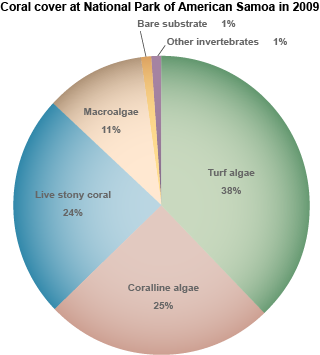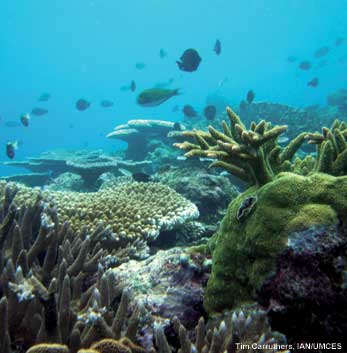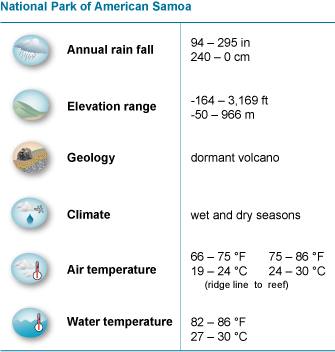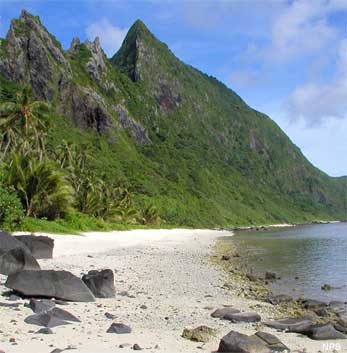Coral reefs in the National Park of American Samoa are vibrant and colorful ecosystems
Teeming with over 975 species of colorful fish and more than 250 coral species, the coral reefs in and around the National Park of American Samoa are some of the most beautiful in the world. The reefs include sizable table corals and are home to a great diversity of invertebrates such as faisua (giant clams), ʻaveau (starfish), and a polychaete worm called palolo—which Samoans harvest for food when they swarm at night once or twice a year. Samoan reefs are home to important food fish such as alogo, (blue-lined surgeonfish). Manini (convict tangs), one of the many herbivores, control algae on the reef. A few large predators such as malie (sharks) keep the reef healthy by eating the slow or sick fish. The vibrant colors and diversity on these reefs will light up any snorkeler’s mask.
Storms and other natural events cause periods of coral reef destruction and recovery
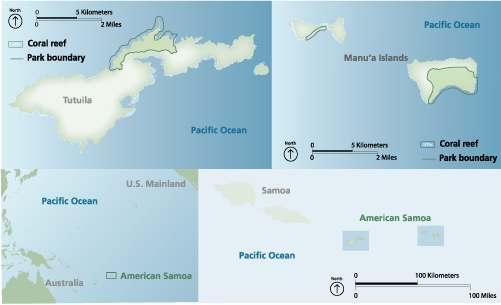 Number of units: 3
Number of units: 3Total area: 10,520 acres
Marine area in park: 7,414 acres
Not only are the reefs of the National Park of American Samoa colorful, they are also home to a relatively large number of coral species (NPS 2009). A diversity of coral species benefits the reef in general. Since coral reefs experience natural cycles of damage and recovery, healthy reefs contain both fast-growing and slow-growing coral species. These differences in growth rates allow coral reefs to adapt to natural disturbances. For example, cyclones and other strong storms damage or even kill corals. However, corals are always growing and after storm events they continue to compete for space on the reef (Craig 2009). Fast-growing corals compete with fast-growing algae to cover the damaged corals; however, slow-growing algae steadily rebuild the reef structure. Park staff monitor the number and abundance of coral species over time to detect changes in coral cover. Identifying changes in coral cover provides vital information for resource managers to make informed decisions about natural resources.
Cover refers to the space covered by a particular organism on a reef or seafloor when viewed from above. Scientists often use changes in coral cover over time to monitor the overall health of a coral reef.
